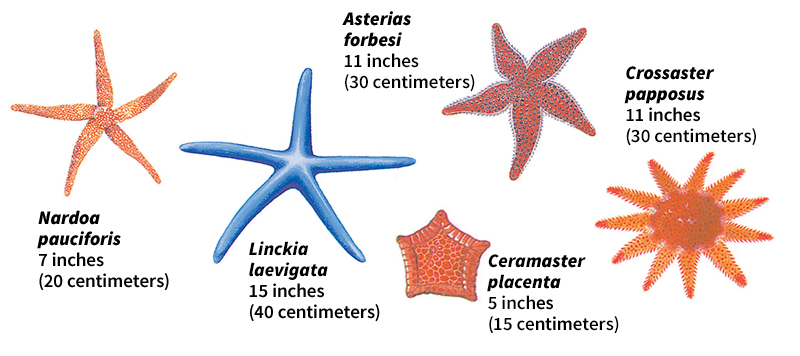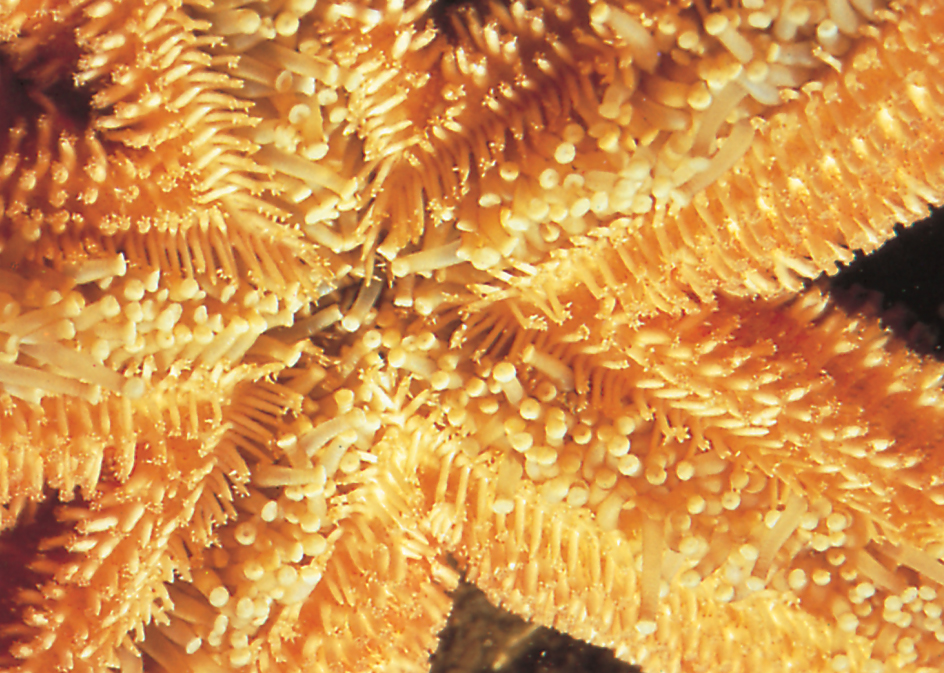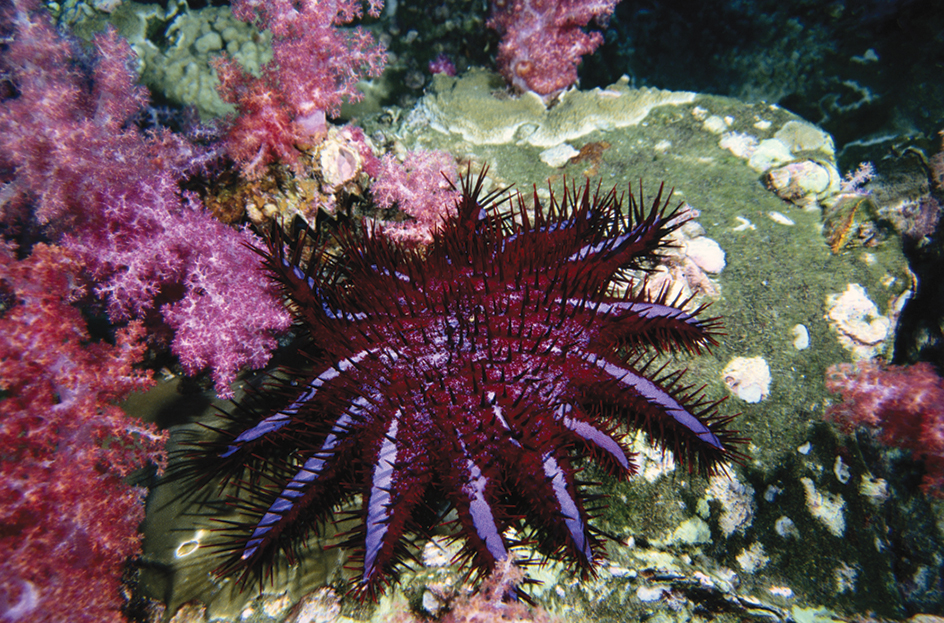Starfish, also called a sea star, is a spiny-skinned sea animal known for its distinctive “star” shape. A starfish has thick, armlike extensions that spread out from its body or central disk. Starfish are not fish. They belong to a group of animals called echinoderms, which also includes brittle stars, sea cucumbers, sea lilies, sea urchins, and sand dollars. Starfish live in all of the world’s oceans, in both shallow and deep waters. They do not live in fresh water.

About 1,500 species of starfish exist. Most have five arms and look somewhat like five-pointed stars. Some species have as many as 40 arms or more. The body of a starfish can measure from less than 1 inch (2.5 centimeters) to more than 3 feet (1 meter).
The body of a starfish.
A starfish’s mouth lies at the center of its underside and leads directly into a large, baglike stomach. The stomach usually consists of two parts. The cardiac stomach extends from the mouth to the pyloric stomach above. The pyloric stomach has internal branches called pyloric caeca that run the length of each arm and serve as the primary site of digestion.
The surface of the body features ambulacral grooves that extend from the mouth to the tip of each arm. Typically, two or four rows of slender tube feet line the grooves. The tube feet often have suction disks on their ends. Starfish use tube feet to crawl and obtain food.
Long tube feet at the tips of the arms help starfish to sense their surroundings through touch. Many starfish sense light using a small, colored eyespot at the tip of each arm. Starfish do not have a central brain. Nerves run along the length of the ambulacral grooves and surround the mouth.

A complex system of canals carries water through the body and controls the extension and movement of the tube feet. It also helps to maintain the balance of fluids in the body and distributes gases involved in respiration. The madreporite, a small filter on top of the central disc, lets seawater enter the system.
The life of a starfish.
Most starfish live for three to five years. In most species, the female releases thousands of eggs into the sea, where sperm from the male fertilizes them. Starfish release eggs and sperm from reproductive organs in their arms. The fertilized eggs develop into tiny, drifting larvae (young). After some time, each larva settles on the sea bottom and develops into a juvenile starfish. In some species, the female may hold the eggs on the surface of her body or in her stomach to protect the developing young. Some starfish reproduce through fission. In this process, the body of the parent divides to form two or more independent individuals, which then regenerate (regrow) missing portions.
Starfish feed on other starfish and on such animals as chitons, coral, sea cucumbers, sea urchins, snails, sponges, and worms. Many starfish feed on bivalves, animals with hinged shells, such as clams, mussels, and oysters. The starfish usually attaches its tube feet to the halves of the bivalve’s shell, pulling on them until they part slightly. The starfish then pushes its cardiac stomach, turned inside out, through the crack and secretes enzymes to begin digesting the prey. It sucks the partially digested food into digestive glands in its arms. The sunflower starfish consumes its prey whole and digests it internally. Other starfish ingest (take in) mud and extract small food particles from it. Still others use their spiny arms to trap small organisms drifting in the water. These suspension feeders use their tube feet to pass the food down their arms to the mouth.

Although some crabs, fish, and snails eat them, starfish have few predators. If grabbed, many starfish can drop off arms in a defensive reaction called autotomy. They can then regenerate new arms to replace the old ones. If a starfish is cut in two or more pieces, each of the pieces may become a new animal as long as it contains a portion of the central disk. When predators attack, sunflower starfish release fluids that cause nearby sunflower starfish to flee. Some starfish more than triple their speed to escape predators.
